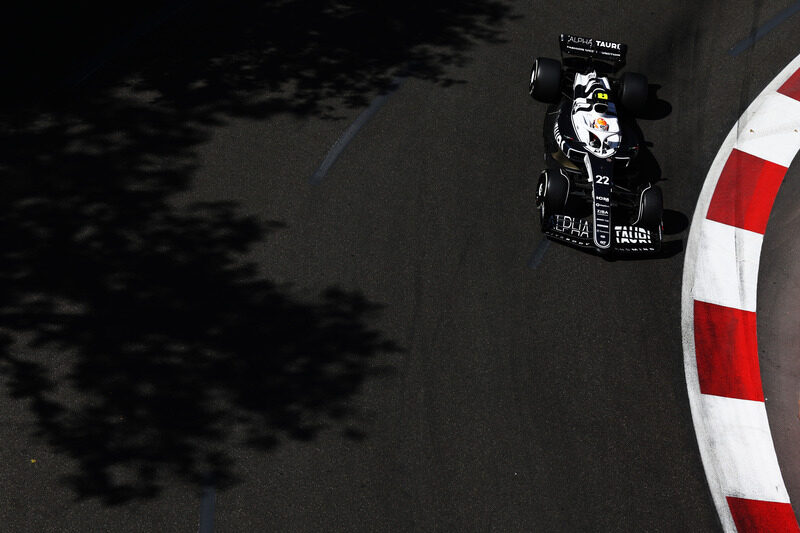Motorsports Racing News & Blog Articles
Nikolas Tombazis admits to FIA ‘overreaction’ following Tsunoda rear wing incident in Baku
Nikolas Tombazis, the FIA’s Single Seater Director, has spoken on how Yuki Tsunoda’s rear wing incident at the Azerbaijan Grand Prix led to an overreaction inside the FIA, in regards to their use of the black and orange flag across the 2022 FIA Formula 1 World Championship.
While looking nailed on for a top-ten finish in Baku, Tsunoda’s rear wing split in half, forcing the FIA into presenting the Scuderia AlphaTauri driver with a black and orange flag. Tsunoda’s mechanics opted to mend the rear wing by duct-taping it back together to allow the Japanese driver to continue and finish the race, leaving many questioning the overall safety of Tsunoda’s ATO3 throughout the incident.
Following the incident, the use of the black and orange flag by the FIA certainly increased, with the Haas F1 Team falling foul on three separate occasions due to damaged front wing endplates, on all three occasions the American-owned team felt they were safe to continue without presenting a risk to the rest of the grid but were forced to pit by the mandate of the black and orange flag.
The former Scuderia Ferrari Chief Designer spoke on how the incident involving Tsunoda in Baku led to the FIA heading in a direction in which they were deeming cars unsafe, when in fact they could have potentially continued on with the damage.
“We had a situation in Baku where objectively a car was let to run with damage that really a car should not be running with,” he stated.
“That was one of AlphaTauris with rear wing damage that was taped up or something like that, that was ridiculous. Clearly there, we got it wrong.
“I think then that created a bit of an overreaction where we started deeming cars unsafe even when they were a bit on the limit, let’s say. So we went a bit too far in one direction. I think we took some corrective action after the US.”
Tombazis further added how the FIA’s overreaction ultimately led to them reassessing their enforcement of the flag after the United States Grand Prix, with the governing body now putting the onus on the team’s to decide whether their car’s safety presents a risk or not.
“We revised our criteria on the black and orange flag from Mexico onwards, we already saw one or two cars after that that were not shown the black and orange flag. Our assessment was, having analysed the situation, that we overreacted a bit.”
The FIA’s Single Seater Director spoke on how their new approach to such situations will benefit the team’s in the coming season. As well, to the delight of Haas, Tombazis also revealed that the black and orange flag would no longer be brought out for a ‘wobbly front end plate’.
“That removes any need for intervention on our side, because teams are by and large quite responsible on that,” Tombazis noted.
“But we would not show a black and orange flag in a situation like a wobbly front end plate, for example. Now if front wing damage from contact is such that we see that the various flap elements are actually wobbling in relation to each other, then that we would consider to be dangerous.
“But by and large, the teams have the flap adjustment mechanism sort of about 100mm or so for the inboard of the endplate, and usually when they do come into contact, what breaks on the outside still leaves the rest of the wing when it impacts.”
 Credit: Red Bull Content Pool/Clive Rose/Getty Images
Credit: Red Bull Content Pool/Clive Rose/Getty ImagesCopyright
© The Checkered Flag
